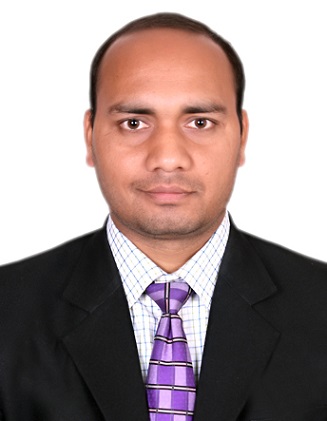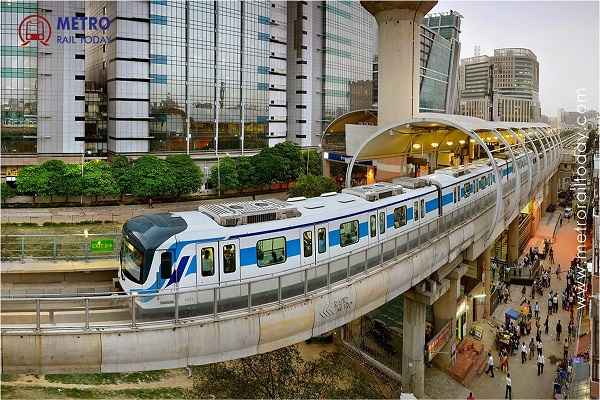 Know latest progress of Kolkata Metro Expansion, 20 km length stuck over land issues
Know latest progress of Kolkata Metro Expansion, 20 km length stuck over land issues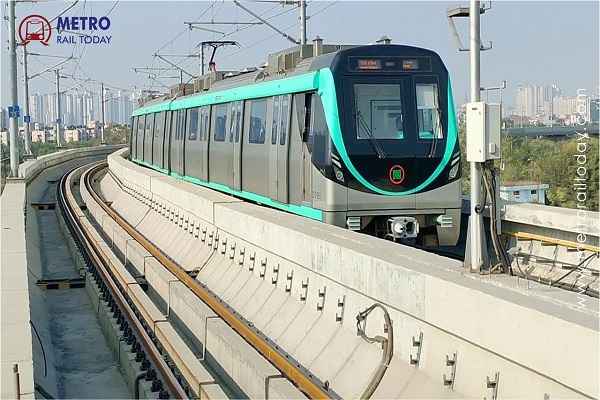 Ayesa India wins Design Consultancy Contract for Noida Metro Aqua Line Extension
Ayesa India wins Design Consultancy Contract for Noida Metro Aqua Line Extension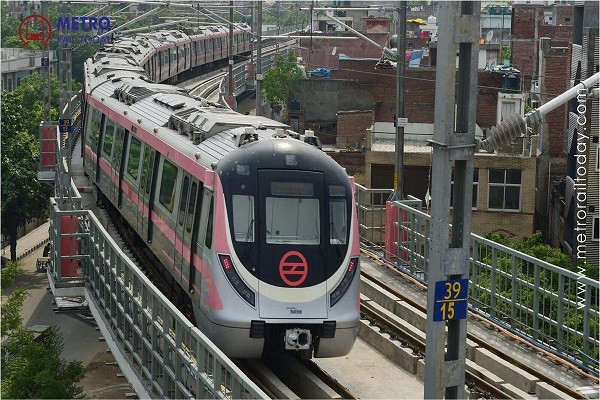 Vossloh Cogifer bags Track Infrastructure Contract for Delhi Metro Phase 4 Corridors
Vossloh Cogifer bags Track Infrastructure Contract for Delhi Metro Phase 4 Corridors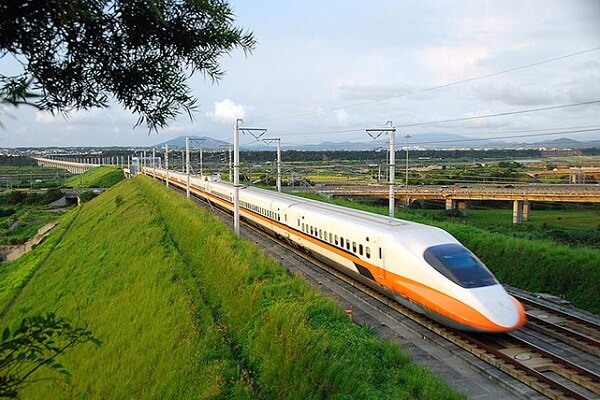 Railway finalised revised alignment for ₹16,000-crore Pune–Nashik Semi High-Speed Rail Corridor
Railway finalised revised alignment for ₹16,000-crore Pune–Nashik Semi High-Speed Rail Corridor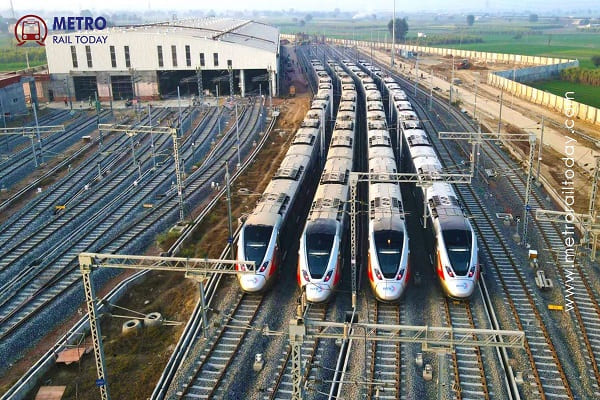 India’s First High-Speed, Signalling-Integrated CMV launched for Namo Bharat RRTS Corridor
India’s First High-Speed, Signalling-Integrated CMV launched for Namo Bharat RRTS Corridor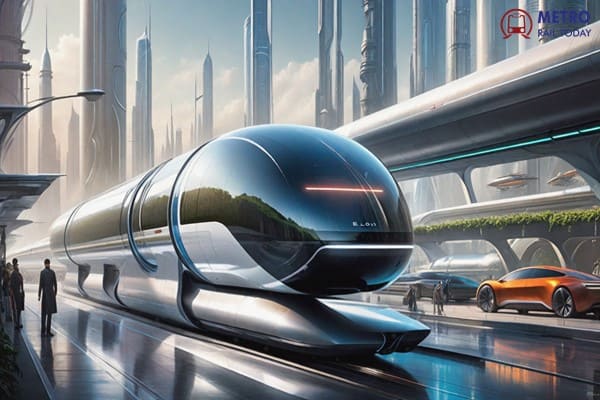 TuTr Hyperloop secures First-Ever Order from Deendayal Port Authority
TuTr Hyperloop secures First-Ever Order from Deendayal Port Authority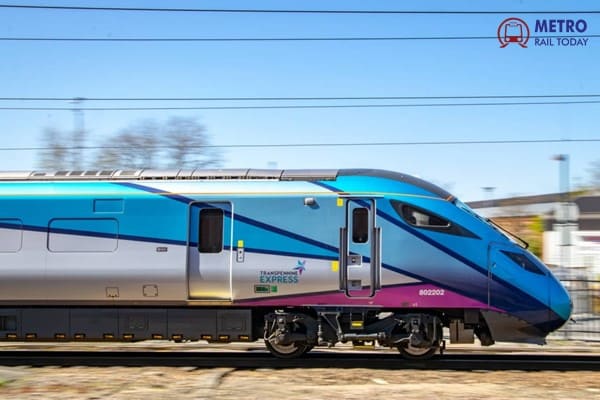 BEML bags ₹157 Crore Order from Loram Rail for Switch Rail Grinding Machines
BEML bags ₹157 Crore Order from Loram Rail for Switch Rail Grinding Machines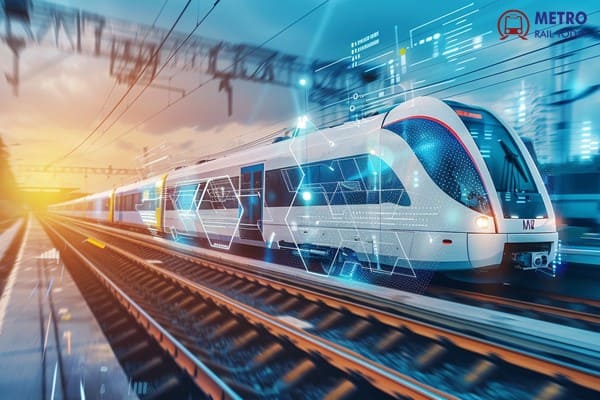 MxV Rail and KRRI forge Global Research Alliance to accelerate Next-Generation Rail Technologies
MxV Rail and KRRI forge Global Research Alliance to accelerate Next-Generation Rail Technologies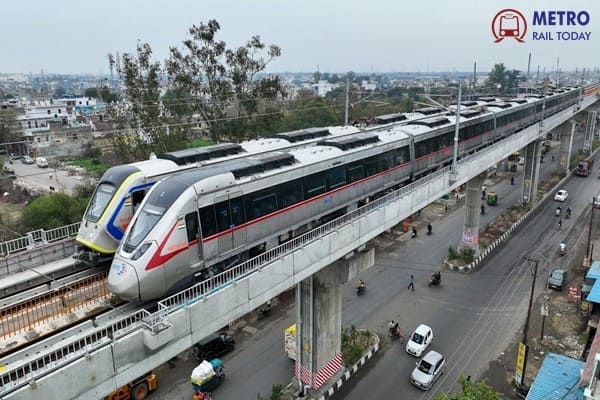 Uttarakhand seeks Pre-Feasibility Study for Meerut-Haridwar-Rishikesh RRTS Corridor
Uttarakhand seeks Pre-Feasibility Study for Meerut-Haridwar-Rishikesh RRTS Corridor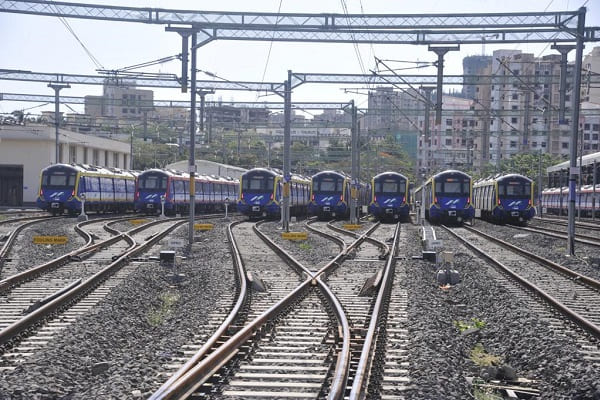 RIFTEK achieves major milestones in partnership with Indian Metro Rail Systems
RIFTEK achieves major milestones in partnership with Indian Metro Rail Systems
Know all about India's first Regional Rapid Transit System: Delhi-Meerut RRTS Corridor
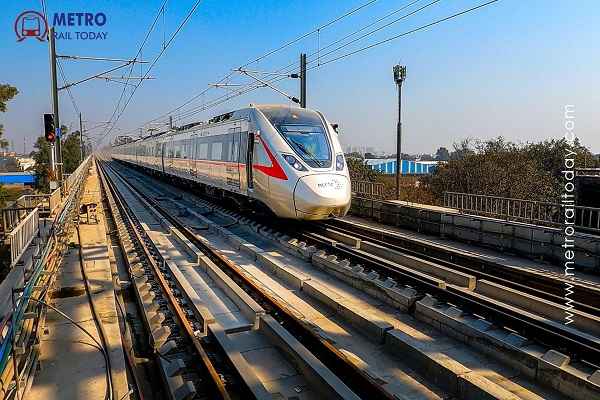
RRTS is a rail-based, high-speed and high-frequency transit system with a design speed of 180 Kmph and an average speed of 100 Kmph aimed at bringing people and places closer to the National Capital Region.
The RRTS system will provide fast, reliable, safe, comfortable, efficient and sustainable transport solutions and connect Delhi to the urban centres of Ghaziabad, Muradnagar, Modinagar, and Meerut. The corridor will encourage polycentric development in NCR and improve the quality of life of the people.
Prioritized Corridors in Phase-1 (383 km)
Out of 8 identified corridors, 3 are prioritized in Phase-I: Delhi-Ghaziabad-Meerut RRTS Corridor, Delhi-Gurugram-SNB-Alwar RRTS Corridor and Delhi-Panipat RRTS Corridor.
| Corridor | Total Length | Total Stations | Travel Time | Ridership (Estimated) |
| #1 Delhi-Meerut | 82.15 km | 25 (12 RRTS + 13 MRTS) | 60 Minutes | 8,00,000 |
| #2 Delhi-Alwar | 198.0 km | 11,00,000 | ||
| Delhi-SNB | 107.0 km | 16 | 70 Minutes | - |
| SNB-Sotanala | 33.0 km | 4 | 20 Minutes | - |
| Sotanala-Alwar | 58.0 km | TBA | - | - |
| #3 Delhi-Panipat | 103.0 km | 17 | 65 Minutes | 7,00,000 |
Delhi-Ghaziabad-Meerut RRTS Corridor
Key Details
- Corridor Length: 82.15 km
- Elevated Length: 70.0 km (Delhi: 9.22 km; UP: 60.57 km)
- Underground Length: 12.0 km (Delhi: 4.08 km; UP: 8.08 km)
- Stretch in Delhi: About 14 km, stretch in UP: About 68 km.
- Train Maintenance Depots: 02 (Duhai and Modipuram)
- Priority Section Length: 17.0 km (Sahibabad to Duhai)- Commissioning target by 2023.
- Commissioning of the full corridor from Delhi to Meerut by 2025.
- Project Completion Cost: INR 30,274 crore.
- Source of Funding: Multilateral Funding- about $1 bn from ADB, $500mn from NDB & $500mn from AIIB and contribution from Government of India: 20%; from Delhi Govt: 3.22%; from UP Govt: 16.78%.
- Construction work on this corridor is going on in full swing. The 17 km priority section between Sahibabad to Duhai is targeted to be commissioned by 2023 and the full corridor by 2025.
- Local transit services will be provided on the RRTS network in Meerut. With 13 stations in the span of 21 km for local transit needs.
Stations
There will be 25 stations including two depot stations on Delhi-Ghaziabad-Meerut RRTS Corrid0r:
Underground Stations: 4 (one in Delhi; three in Meerut, UP)
|
S.No. |
Station Name |
Design |
Station for RRTS and MRTS (Meerut Metro) |
||
|
1 |
Jangpura |
Elevated |
RRTS |
||
|
2 |
Sarai Kale Khan |
Elevated |
RRTS |
||
|
3 |
New Ashok Nagar |
Elevated |
RRTS |
||
|
4 |
Anand Vihar |
Underground |
RRTS |
||
|
5 |
Sahibabad |
Elevated |
RRTS |
||
|
6 |
Ghaziabad |
Elevated |
RRTS |
||
|
7 |
Guldhar |
Elevated |
RRTS |
||
|
8 |
Duhai |
Elevated |
RRTS |
||
|
9 |
Duhai Depot |
At Grade |
Depot Station |
||
|
10 |
Muradnagar |
Elevated |
RRTS |
||
|
11 |
Modi Nagar South |
Elevated |
RRTS |
||
|
12 |
Modi Nagar North |
Elevated |
RRTS |
||
|
13 |
Meerut South |
Elevated |
RRTS and Local transit services in Meerut |
||
|
14 |
Partapur |
Elevated |
Local transit services in Meerut |
||
|
15 |
Rithani |
Elevated |
Local transit services in Meerut |
||
|
16 |
Shatabdi Nagar |
Elevated |
RRTS and Local transit services in Meerut |
||
|
17 |
Bramhapuri |
Elevated |
Local transit services in Meerut |
||
|
18 |
Meerut Central |
Underground |
Local transit services in Meerut |
||
|
19 |
Bhaisali |
Underground |
Local transit services in Meerut |
||
|
20 |
Begumpul |
Underground |
RRTS and Local transit services in Meerut |
||
|
21 |
MES Colony |
Elevated |
Local transit services in Meerut |
||
|
22 |
Daurli Metro |
Elevated |
Local transit services in Meerut |
||
|
23 |
Meerut North |
Elevated |
Local transit services in Meerut |
||
|
24 |
Modipuram |
Elevated |
RRTS and Local transit services in Meerut |
||
|
25 |
Modipuram Depot |
At Grade |
Depot Station and Local transit services in Meerut |
Features for Passengers
- RRTS train coaches will have transverse 2x2 seats.
- Optimized aisle width with grab handles and rails for a comfortable journey for standing passengers, overhead luggage rack, mobile/laptop charging sockets, and adequate legroom.
- Double-glazed, tempered large safety glass windows that offer passengers a panoramic view of the outside.
- Equipped with a public announcement & display system, dynamic route map display, and an infotainment display, along with emergency communication facilities. The train is designed for modern visual and audio announcements that orient passengers with information about the next stop, final destination, etc.
- Automatic plug-in type wide doors reducing air friction and noise.
- CCTV, fire & smoke detector, fire extinguisher and door indicator.
- Universally accessible- Dedicated wheelchair space located near the train doorway for easy access.
- Proven lightweight and compact propulsion system with high reliability and performance requirements.
- Innovative Train Control Monitoring System (TCMS) technology, as well as its predictive and condition-based monitoring features, will enhance the fleet’s performance by providing extensive train-to-ground diagnostics.
- Designed keeping in mind the high acceleration and high deceleration that the train needs to undergo given the maximum operational speed of 160kmph and stations at every 5-10km.
- Trains would run under Automatic Train Operation (ATO) to provide a smooth ride with precise stopping accuracy and will also save energy.
- These modern trains will have push buttons for the selective opening of doors on a need basis. This eliminates the requirement of opening all doors at every station, thus leading to energy savings.
- RRTS trains will also have premium class (one coach per train) with spacious, comfortable and reclining seats which will be accessible through a special lounge at the platform level
- One coach on every train will be reserved for women passengers as well.
- Given the high-speed train operations, all RRTS stations will have Platform Screen Doors (PSDs) for the safety of the passengers. The train doors will be integrated with PSDs.
Commuter Centricity
- NCRTC has focused on commuters’ ease while designing RRTS rather than opting for engineering comfort.
- Multi-Modal Integration: RRTS stations would be integrated with various modes of transport like airports, Indian Railway Stations, Inter-State Bus Terminus, Delhi Metro Stations, and expressways, wherever possible. It will facilitate the seamless movement of commuters from one mode to another. Seamless integration between different modes of transport encourages people to use public transport.
- All RRTS corridors will be integrated with all the 7 lines of Delhi Metro, wherever interconnecting. While RRTS will act as a backbone for regional transportation, Delhi Metro lines will complement it by providing feeder & dispersal services.
- The first corridor has 25 stations and most of them will be interconnected with another mode of public transport at Sarai Kale Khan, New Ashok Nagar, Anand Vihar, Sahibabad, Ghaziabad, Duhai, Muradnagar, Meerut South, Partapur, and Bhainsali via Foot over Bridge, underpass, lifts, escalator and other possible means.
- Once completed, the length of Delhi’s Mass transit system including DMRC and RRTS network will be about 750 Km which is more than the length of the London Cross rail, Hong Kong MTR and Paris RER.
- All the 3 corridors of Phase-1 will converge at Sarai Kale Khan and will be interoperable, enabling commuters to travel end to end from one corridor to another without having to change the train.
- All the RRTS stations will have pedestrian-friendly paths, lifts/escalators, and sitting areas among various other commuter-centric amenities facilitating ease of access.
- All the RRTS stations will have platform screen doors for enhanced commuter safety.
- The provision of a Premium class coach in each RRTS train will encourage the affluent class to leave their Cars/Personal vehicles and travel through Public Transport.
- Implementation of the Delhi-Ghaziabad-Meerut RRTS Corridor is expected to shift the modal share in favour of public transport from 37% to 63% in the region, which ultimately helps in curbing pollution.
- Increased share of Public Transport will reduce dependence on private vehicles and will lead to less congestion on roads resulting in a reduction in accidents.
Progress so far
- The foundation stone for the Delhi-Ghaziabad-Meerut RRTS Corridor was laid by the Prime Minister Narendra Modi on 8th March 2019.
- With the finalization of the design and architecture of RRTS stations in the priority section of 17 km between Sahibabad and Duhai, the construction work of all 5 stations is in an advanced stage.
- Track laying, OHE and signalling work is progressing at pace on the viaduct of the Priority Section. So far, about 27 track kilometres (about 13.5 km of the viaduct) work and about 35% of OHE installation work have been completed.
- At Anand Vihar, Four Sudarshan (Tunnel Boring Machines) are engaged in the construction of 4 tunnels for the corridor near the station. Two of these tunnels are being constructed from Anand Vihar towards New Ashok Nagar for 3 Km and from Anand Vihar towards Sahibabad for 2 km.
- Automatic Fare Collection (AFC) system will be adopted for the country's first RRTS corridor (Delhi- Ghaziabad- Meerut). This system will enable QR Code-based ticketing (Digital QR & Paper QR) and EMV (Europay, Mastercard, Visa) Open Loop contactless cards based on NCMC (National Common Mobility Card) standards.
- An MoU with SECI (Solar Energy Corporation of India) has been signed to harness blended renewable energy for RRTS. MOU has provisions to explore possible opportunities in electric/ transformative mobility, Hydrogen and other alternative sources of fuels and energy.
- NCRTC is implementing an integrated real-time Enterprise Asset Management system (iDREAMS) which will enable it to predict, identify, rectify or remove any risks or shortcomings related to its wide range of assets, ensuring commuter safety and enhancing the travel experience of a hassle-free comfortable ride.
- RRTS Rolling Stock is being manufactured in India at Bombardier's Savli plant in Gujarat. All 40 trainsets (210 coaches) will be manufactured under the Hon'ble Prime Minister's vision of Make in India.




